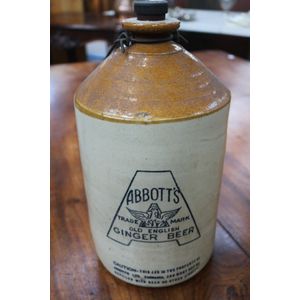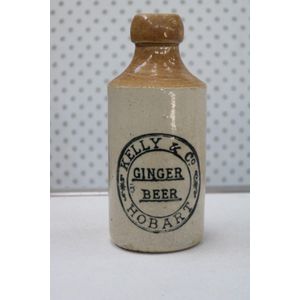Rose Brand Earthenware Crock with Metal Handle
A New Zealand earthenware crock, Rose Brand by E. Mann, Whangarei 1929, two-tone and with metal handle
You must be a subscriber, and be logged in to view price and dealer details.
Subscribe Now to view actual auction price for this item
When you subscribe, you have the option of setting the currency in which to display prices to $Au, $US, $NZ or Stg.
This item has been sold, and the description, image and price are for reference purposes only.
- Stoneware Crocks - Stoneware crocks have a long history dating back to the 17th century in Europe. They were first made by German potters in the Rheinland region, and were known for their durability and resistance to thermal shock. These early stoneware crocks were typically made from a mixture of clay, feldspar, and flint, and were fired at high temperatures to make them strong and non-porous.
The popularity of stoneware crocks quickly spread to other parts of Europe and eventually to America, where they were used by early settlers for food storage and preservation. They were particularly popular in the colonial period, where they were used for pickling and preserving food, as well as for fermenting and storing beverages like beer and cider.
During the 19th century, stoneware crocks became even more popular in America, as they were used in the growing industry of commercial food preservation. Many potteries were established in the United States, making stoneware crocks for commercial use and for households.
Stoneware crocks remained popular throughout the 20th century, but with the advent of modern food preservation methods, their use has diminished. However, they are still used today by many people who prefer traditional methods of food preservation and fermentation. - Earthenware - A basic ceramic material that is fired at a low temperature. Earthenware is the basis of almost all ancient, medieval, Middle Eastern and European painted ceramics. After firing, the colour is the colour of the clay when it is dug from the ground: buff, brown and red. It is not waterproof until glazed. Creamware is a type of earthenware covered with a transparent lead glaze. Majolica, faience and delft are also earthenware covered in an opaque white tin glaze.
Visually similar items

Abbotts old ginger beer stone demijohn
Sold by
in
for
You can display prices in $Au, $US, $NZ or Stg.

Kelly & Co stone bottle, ginger beer bottle, Hobart
Sold by
in
for
You can display prices in $Au, $US, $NZ or Stg.

Sydney stoneware advertising bottle for Broken Hill
Sold by
in
for
You can display prices in $Au, $US, $NZ or Stg.

Kelly & Co stone Hobart ginger beer bottle, Bourne-Denby
Sold by
in
for
You can display prices in $Au, $US, $NZ or Stg.
